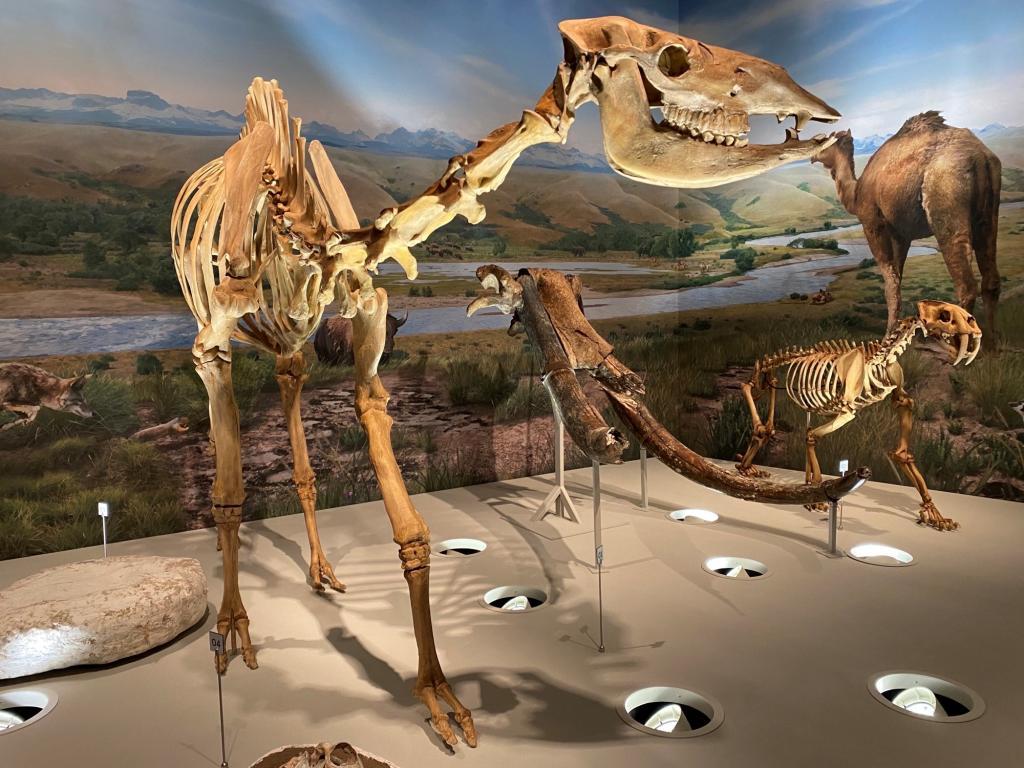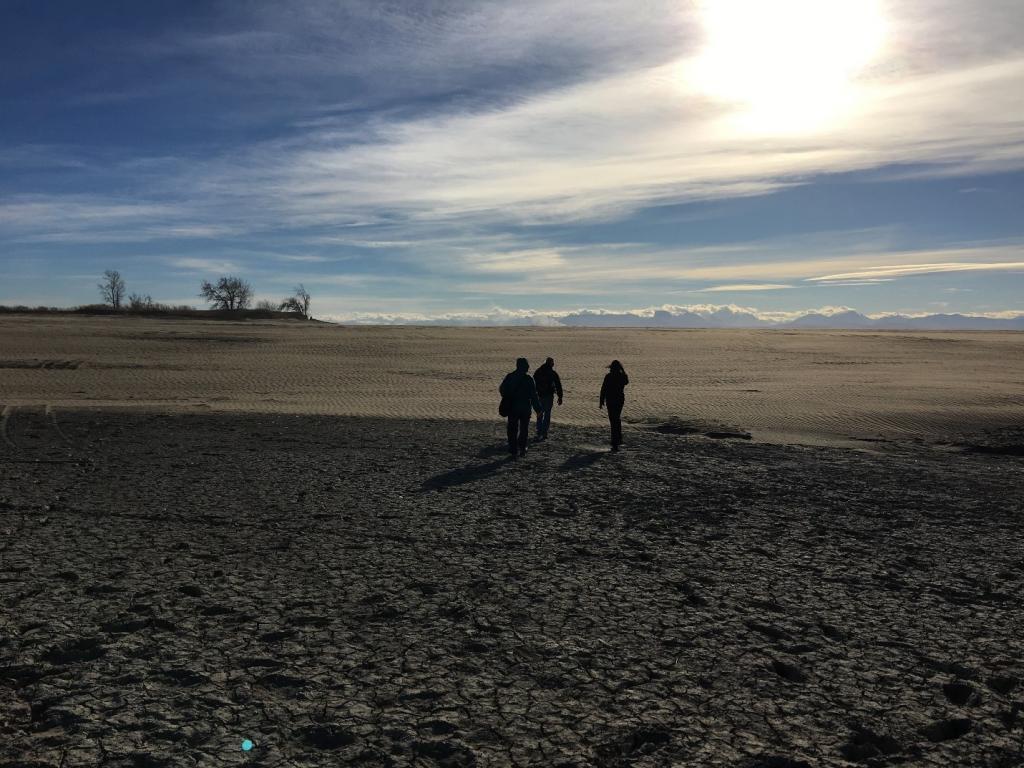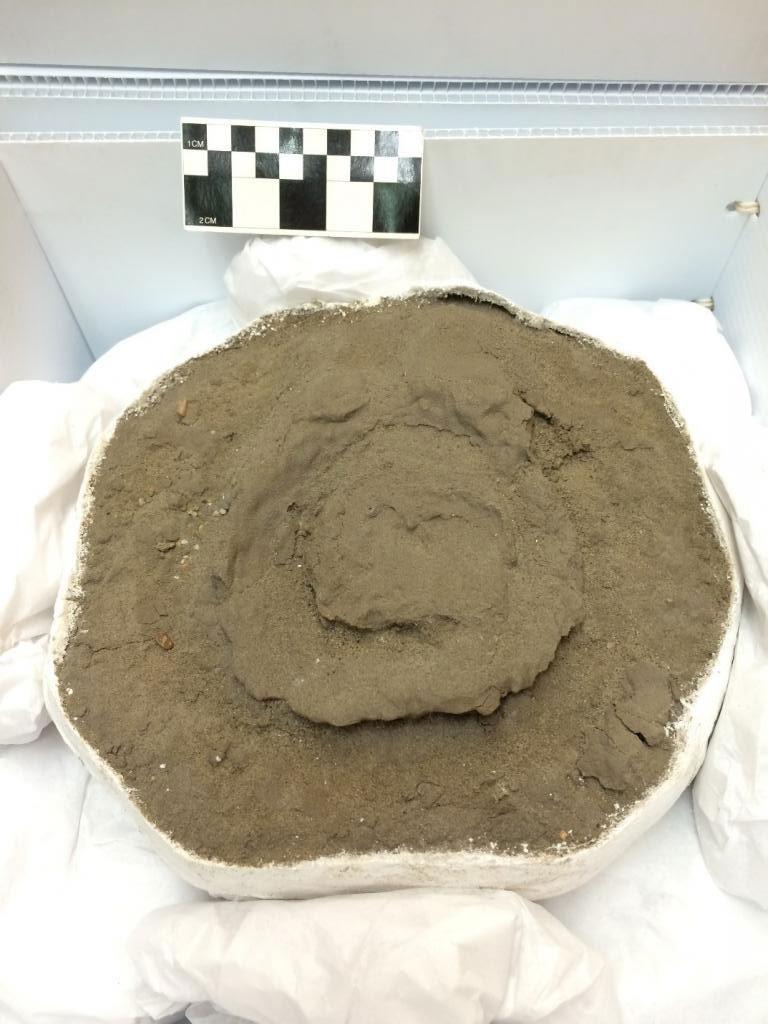Camels... in Alberta?
By Kristine Fedyniak, Assistant Curator, Archaeology, and Chris Jass, Curator, Quaternary Palaeontology
June 22, 2021
Standing close to 2.1 m high at the shoulder, one of the last remnants of a long history of camels in North America stood surveying the newly ice-free, southern Alberta landscape. The camel’s feet pressed into the soft muddy ground as it walked to the water’s edge. Whipping winds seal the print with silt and sand, leaving one of the last Ice Age records of Yesterday’s camel (Camelops hesternus) in North America.

Thirteen thousand years later, the same southern Alberta winds erode sand and silt from a southern Alberta reservoir floor to reveal the tracks of now-extinct camels. Through the blowing winds, researchers from the University of Calgary carefully excavate fragile camel bones that appear nearby in two sections. Digging further, they expose a stone chopper under a vertebrae and another stone tool under a rib fragment. This camel was butchered by people.

This site on the St. Mary Reservoir tells a tale of one of the oldest known Indigenous heritage sites in Alberta; a rare tale of butchering now extinct forms of camels for food 13,000 years ago.
You can see the camel footprint, excavated bones and reproductions at RAM!
